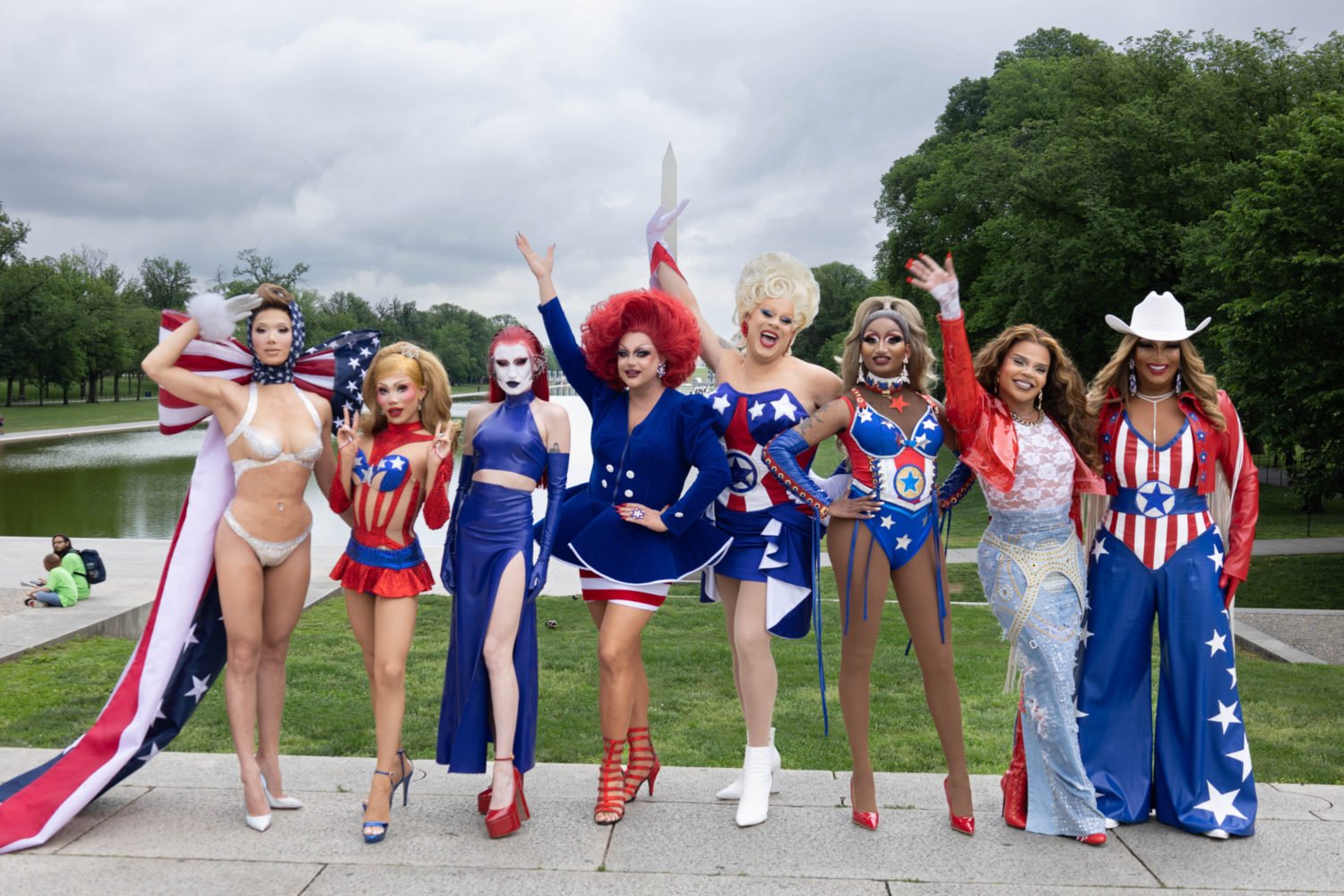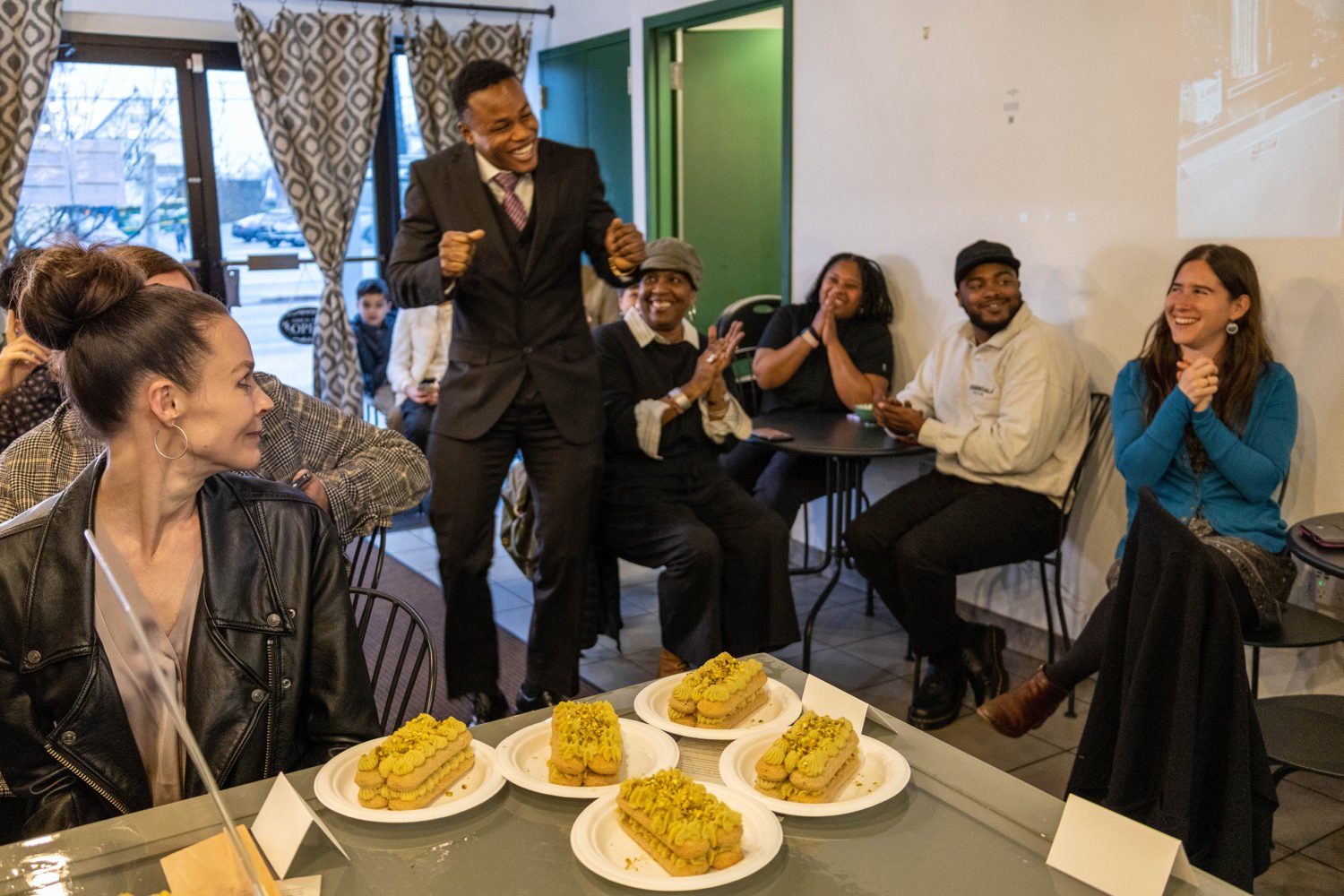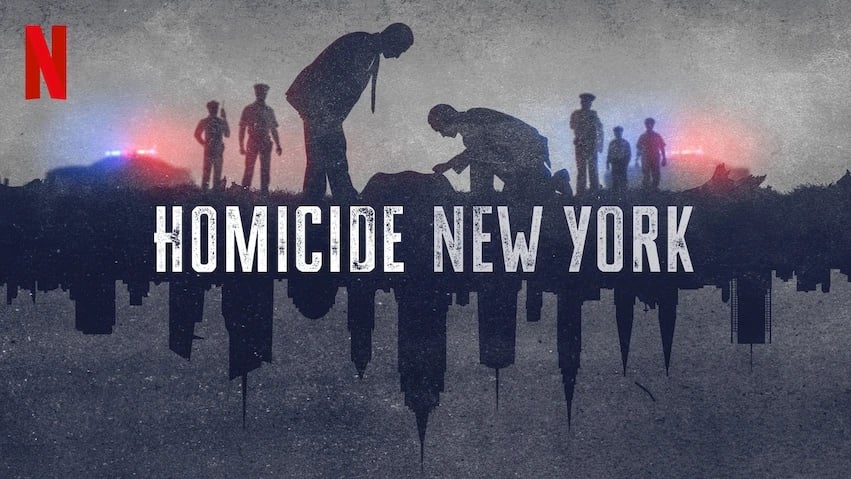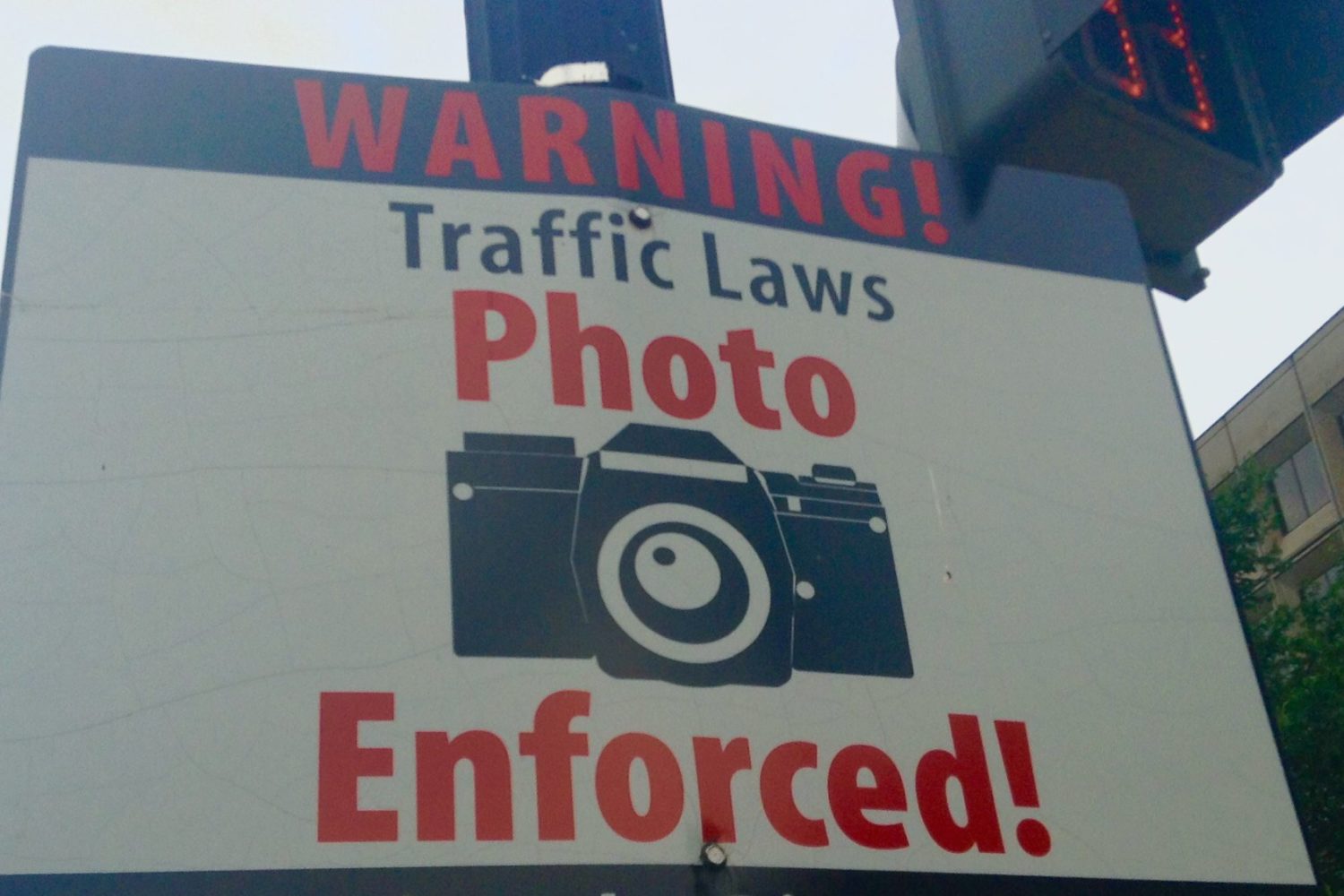A report aired Wednesday night by WRC-TV might have you believe that no intersection in DC is safe from rogue cyclists blowing through red lights, swerving between cars, veering past pedestrians, and turning city streets into danger zones. The story, filed by the station’s transportation reporter, Adam Tuss, revealed that between January 2015 and last April, the District’s network of red-light cameras recorded 1,557 instances of bikes going through stop lights but scant evidence of the cyclists aboard being cited for their moving violations.
To transportation partisans trying to promote a supposed war between cars and bikes, the WRC report looks like fresh ammunition for the side of internal combustion. The video from city-owned cameras depicts some cyclists cutting through crosswalks, cutting off pedestrians, and nearly hitting a Metro bus—the kind of stuff that reinforces a belief that cycling, by nature, promotes lawlessness.
Then there’s the counterpoint, which Tuss’s story included: drivers zoom through red lights far more often than cyclists, and are often ticketed for their misbehavior. WRC also reported that in 2015, the District’s traffic cameras were set off by cars 60,000 times, a figure it collected from AAA Mid-Atlantic. The timespans evaluated for bikes and cars are too different to do a direct ratio, but from looking at that 2015 figure for cars triggering traffic-light cameras, one can infer drivers blew through reds dozens of times more often than bikes.
Tuss was not doing the bidding of AAA, whose officials have sometimes complained about a supposed “war on cars.” WRC’s news desk filed a Freedom of Information Act request for traffic-camera data and video earlier this year. Tuss anticipated backlash from the bike community when he got the assignment.
???
But the story falls short in how it was framed. It’s been a while since Washington Post columnist Courtland Milloy sounded off on two-wheelers, but in January 2015, he fired off a column suggesting that cyclists be isolated to “trails through wooded areas, away from cars and trucks” and that they be required to dismount in downtown areas.
Imagine if someone made that argument about motor vehicles: Instead of triggering red-light cameras 60,000 times a year, cars be isolated to farm roads and demolition derbies, away from cyclists and pedestrians. That argument would and should be dismissed immediately for sounding ridiculous. But it preserves the same false equivalency that lots of transportation reporting—most recently WRC’s last night—prop up between bikes and cars.
So take as a maxim that even if they inhabit the same space, bikes and cars are not the same. The question WRC failed to ask isn’t whether cyclists should be ticketed for running red lights when they’re caught doing so, it’s whether cyclists should run red lights at all.
They should not, but they should—as a group—do a better job correcting their own behavior.
“There isn’t a difference in lawlessness,” says Greg Billing, the executive director of the Washington Area Bicyclist Association. “The difference is in who does the most harm.”
Billing reminded Tuss on Wednesday night that cars—not bikes—cause 99 percent of injuries or fatalities suffered by people using streets and sidewalks. The District is also promoting Vision Zero, a program aimed at eliminating all traffic-induced deaths by 2024, largely through increased fines for moving violations and other new regulations.
A cyclist who runs a red light can be hit with a $150 ticket—and DC police do issue several hundred per year—but said cyclist also has to be unlucky enough to cross that light in front of an officer. And even if there were enough cops to monitor every intersection for bad bike behavior without taking away from other beats, it would still promote that false equivalency between cars and bicycles.
“Fairness would be that cyclists and drivers get tickets in equal rates, but that’s not the just thing,” Billing says.
Calls for increased policing of bike behavior aren’t new, and some of the most indignant have come from cyclists themselves. A 1988 letter to the Post from a DC resident who biked to work every day accused his fellow two-wheelers of lacking any awareness for their surroundings.
“It is no small minority nor just messengers but the majority of cyclists who claim ‘rights’ while not assuming one whit of responsibility,” Peter C. Kohler wrote. He also said that “Any new cycle paths or reserved lanes should be funded by bicycle citations—a few officers on scooters handing out $75 tickets will pay for a whole network of paths.”
Bringing Kohler’s suggestion into the present day shows its unfeasibility. Take the protected bike lane along M St., Northwest, between 14th and 28th streets. Its $210,000 construction cost would have required 1,400 $150 citations, several times more than what DC police have issued annually in recent years.
???
Bikes are far lighter, smaller, and quicker to stop than a car. That’s not an excuse for a cyclist to pedal through a red light, but one who does should, theoretically, have an easier time avoiding an injurious error than a four-wheeled counterpart.
Cyclists, then, have to police themselves. By dint of his job, Billing says he obeys every red light he comes across, but it’s a good rule for all cyclists to follow, whether or not they have a job as an activist.
That doesn’t mean there aren’t small liberties people on bikes can’t take. Many traffic signals around DC give pedestrians a few seconds’ lead time on car lanes, and DC law allows cyclists to take advantage of that window, if only to get a jump on the cars with which they’re sharing a road. A cyclist and pedestrian safety law the District passed last year also allows cyclists to treat stop signs as yield signs, making it easier to zip through sleepier blocks where the risk of a collision is lower.
In a more perfect world—full of protected bike lanes on every road and inverted-U racks on every corner, undoubtedly—DC and the surrounding suburbs would legalize the so-called “Idaho stop,” which allows cyclists to treat red lights as stop signs. (The maneuver is legal in the Potato State, hence its name.) Until then, though, be courteous of others on the road and observant of the local rules. A few knuckleheads riding like jagoffs only encourages misleading evening-news reports and pro-bike hot takes.














